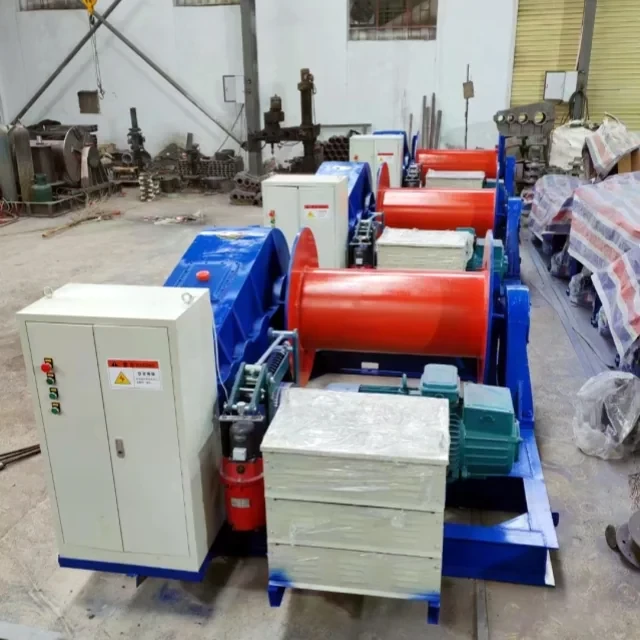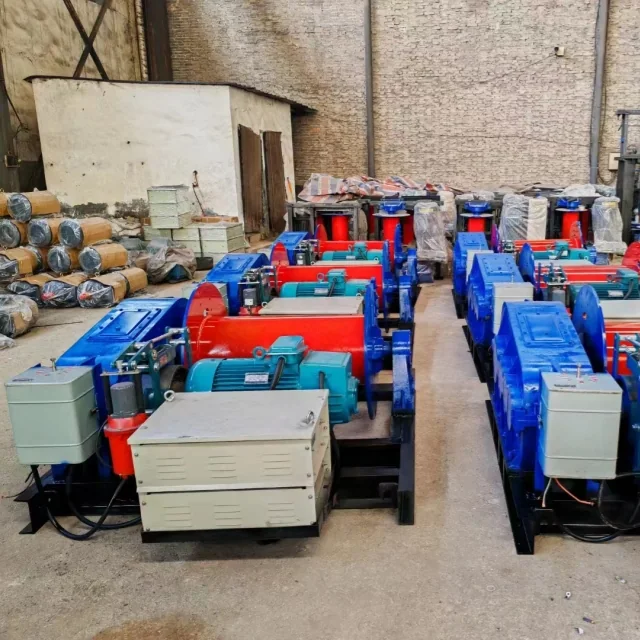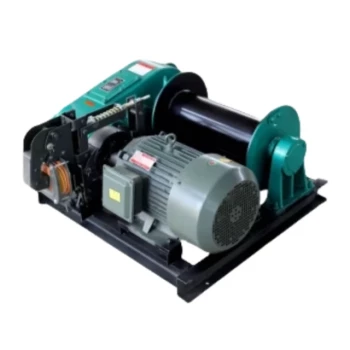Introduction
While standard winches handle most construction tasks, certain high-risk environments demand explosion-proof models to prevent catastrophic accidents. This guide clarifies when general guidelines aren’t enough, detailing scenarios where flammable gases, dust, or volatile materials necessitate specialized equipment. You’ll learn how to assess risks, compare winch types, and apply real-world safety protocols—ensuring compliance and worker protection.
Explosion-Proof Winch Requirements in Construction Environments
General Guidelines for Winch Selection
Most construction projects use planetary reducer winches (JD-type) or electric winches for heavy lifting. These are cost-effective and efficient for:
- Moving structural beams
- Hoisting equipment
- Standard material handling
However, explosion-proof winches become non-negotiable when:
- Flammable substances (e.g., methane, hydrogen sulfide) are present.
- Combustible dust accumulates (common in grain silos or coal-handling sites).
- Oxygen-enriched environments increase ignition risks.
Did you know? A spark from standard winch motors can ignite gases at concentrations as low as 5% of the lower explosive limit (LEL).
High-Risk Scenarios Demanding Explosion-Proof Features
1. Confined Spaces with Poor Ventilation
Tunnels, underground mines, and storage tanks trap flammable gases. Explosion-proof winches with sealed motors prevent sparks from escaping.
2. Petrochemical or Refinery Projects
Leaks of volatile compounds like benzene or propane require winches rated for Class I, Division 1 hazardous areas.
3. Demolition Sites with Legacy Contaminants
Older buildings may harbor explosive residues (e.g., asbestos-treated materials or chemical storage).
Visual metaphor: Using a standard winch here is like lighting a match in a fireworks factory—one small error triggers disaster.
Key Criteria for Choosing Between JD-Type and Explosion-Proof Winches
| Factor | JD-Type Winches | Explosion-Proof Winches |
|---|---|---|
| Cost | Lower upfront investment | Higher (20–50% premium) |
| Maintenance | Standard lubrication | Sealed components, specialized servicing |
| Safety Certifications | CE, OSHA | ATEX, IECEx, UL Classified |
Ask yourself:
- Does the worksite have gas detectors or ventilation systems? If not, explosion-proofing is critical.
- Are there "hot work" permits in place? These indicate flammable risks.
Case Study: Hazardous Material Handling in Tunnel Construction
A 2021 tunnel project in Germany switched to explosion-proof winches after methane pockets were detected. The team used Garlway’s ATEX-certified models with:
- Non-sparking brass components
- Thermal overload protection to prevent motor overheating
- Remote controls for operator safety
Result: Zero ignition incidents despite fluctuating gas levels.
Conclusion: Prioritizing Safety Over Short-Term Savings
While standard winches suffice for 90% of construction tasks, explosion-proof models are lifesavers in high-risk zones. Always:
- Conduct a hazard assessment before selecting equipment.
- Verify certifications match your region’s standards (e.g., ATEX for the EU).
- Train crews to recognize flammable environments.
For projects where safety margins are thin, Garlway’s explosion-proof winches offer reliable protection—turning potential disasters into routine operations.
Final thought: If your site’s risk assessment raises any doubts, err on the side of caution. The cost of an explosion far outweighs equipment upgrades.
Related Products
- Warn Winch Windlass Boat Trailer Winch
- 12000 lb Electric Boat Trailer Winch with Windlass Anchor Warn
- Electric and Hydraulic Winch for Heavy Duty Applications
- Electric 120V Boat Winch by Badlands
- Heavy Duty Electric Boat Winch Windlass Anchor
Related Articles
- How to Choose the Right Winch Power Source for Off-Grid Operations
- How Trailer-Mounted Winches Transform Mobile Operations Across Industries
- How Winch Engineering Transforms Safety and Efficiency in Critical Lifting Operations
- How to Select Winch Speeds for Optimal Safety, Cost, and Efficiency
- How to Choose the Right Winch Direction for Heavy-Load Operations














